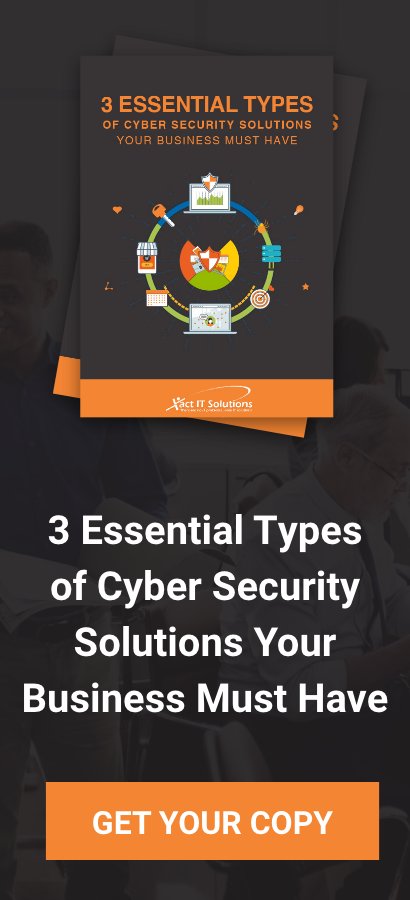News articles spend a lot of time talking about malicious hackers typing away in dimly lit basements and state actors using their country's resources to disrupt information systems. However, IBM found that 60 percent of the cyber threats that face businesses are internal. Many employees are oblivious to appropriate cybersecurity practices. Here are the ways that companies can improve their protection against internal actors.
How Employees Create Vulnerabilities
Employees in non-technical roles may not understand their cybersecurity responsibilities when they're using the IT resources. Phishing is a common attack vector that tricks a person into believing that a fake email is legitimate. A malicious application may be attached to the email, or it could lead to a compromised website.
The hacker gains an "in" to the network once the employee accidentally installs the malware. In some cases, cybercriminals use social engineering tactics to pose as upper management and other important leaders in the organization. Employees may respond to these emails with sensitive information, such as usernames and passwords.
Types of Cybersecurity Training
Cybersecurity awareness is one of the most effective ways to help employees understanding their role in protecting the company against threats. Organizations have many training options available for teaching employees role-appropriate information. Employees have their own learning preferences, and some solutions are more effective than others in illustrating cybersecurity threats.
- Knowledgebase: This type of training is self-service and may be part of an existing company intranet. When employees have some technical proficiency and need to brush up on their IT security knowledge, this resource works well. Businesses can also offer them as reference libraries following other types of training.
- Trainer-led workshops: Group workshops allow experts to reach large numbers of employees quickly. When businesses have major cybersecurity issues caused by lack of security awareness, this method instills the basics quickly. However, it may not be the best option for more complex parts of cybersecurity or those that benefit from a hands-on demonstration.
- Real-time phishing tests: One way to show employees exactly what they need to look for is through a real-time phishing "test." Actual examples of individuals taking the bait are used, so they learn what to look for and the warning signs that they missed. Real-time phishing tests are a powerful way to get cybersecurity points across during awareness training.
- Classes: Some employees benefit from an extended classroom type environment for their cybersecurity training. This approach benefits staff members who may need help getting up to speed on basic practices or those who don't know a lot about technology.
- One-on-one guidance: When businesses have a lot of employees to train on cybersecurity measures, some individuals may fall through the cracks when trying to understand what they need to do. The organization can identify people who need more assistance and pull them aside for one-on-one guidance. This customized training is excellent for staff members operating in technology-limited roles, as they may not have a basic technical skillset that includes security.
Cybersecurity Training is Not a One-Off Process
Companies keep their antivirus software up-to-date to adapt to the latest threats, and they need to do the same thing with cybersecurity training. Most employees don't need to stay on top of the most recent attack to strike the business world, but they do need to know the signs to look out for.
Many business environments are filling up with mobile devices and the Internet of Things, which bring unique cybersecurity challenges into the infrastructure. The training should include the most relevant information for each team or department so they can act appropriately.
Self-service training resources and continual sessions reinforce everything the employees learn and add new knowledge as it becomes necessary. Relying on quarterly or annual training can lead to skill gaps and other issues that are counterproductive to the cybersecurity goal.
Building a Culture of Cybersecurity Awareness
Cybersecurity awareness training is the first step for every business looking for a way to improve their protection. However, they ultimately need to move towards adopting a cybersecurity-centric culture.
The company culture dictates many parts of how a business is run. The top-level members of the organization must embrace and promote IT security through mandates, practices, policies and their own behavior. If cybersecurity awareness isn't modeled at the very top of the company, then everyone down the line won't take it seriously.
Businesses should build incentives into following cybersecurity practices for positive reinforcement, rather than punishing those who fail to adhere to the new requirements. Employees play an important role in stopping attacks before they happen, so creating an encouraging environment is essential to this process.
Organizations should plan on proactively assisting employees and giving them the resources they need to be successful in this venture. Workers should feel like they're an integral part of the company's cybersecurity plan, rather than a potential weakness in the system.
The right training methods help companies stop cybercriminals from reaching sensitive data and information systems. Every employee has to play their own part in recognizing and fighting back against intrusion attempts, especially phishing and social engineering. Innovative and extensive training solutions, such as real-time simulated phishing "tests," provide the context necessary for workers to understand what they need to improve.


